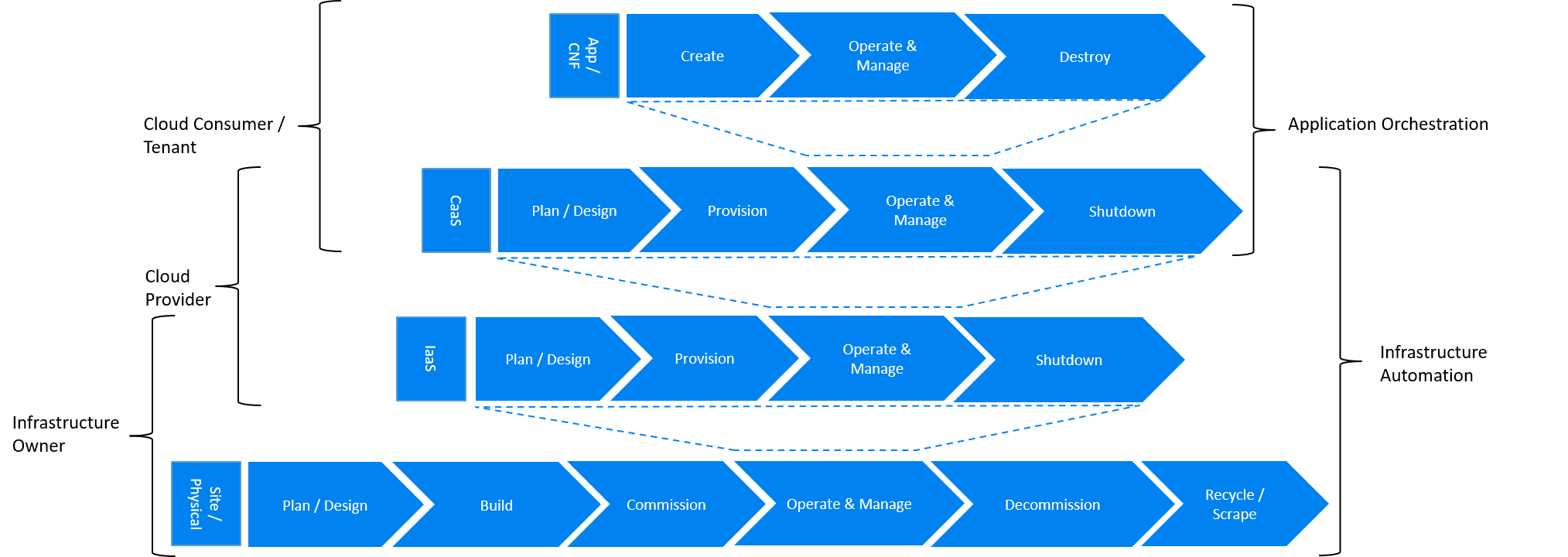...
The following diagrams provide mapping between different stages of the lifecycle automation across all layers of the stack to owners of infrastructure and cloud and the tenant as the consumer of the cloud services in three very different scenarios: applications running as containers within virtual machines (CaaS on IaaS scenario), application running as containers on bare metal (CaaS on BM scenario) and more traditional view of applications running as VNFs within virtual machines (IaaS scenario). The diagrams define the scope of the Infrastructure LCM Automation for each of these scenarios. The dotted lines symbolise the interactions between the layers of each of the model.
Fig 1. Infrastructure automation Automation in CaaS on IaaS scenario
In the CaaS on IaaS scenario, the Infrastructure Automation scope covers the Site/Physical layer, IaaS layer and CaaS layer. From the lifecycle perspective (the left hand side of the diagram), Site/Physical layer is entirely owned by the Infrastructure Owner, the virtualised infrastructure layer (IaaS) is shared between the Infrastructure Owner and the Cloud Provider. Similarly, the container orchestration layer (CaaS) is shared between the Cloud Provider and the Cloud Consumer / Tenant. These relationships can be illustrated by a situation, where a telecommunications provider owns the physical infrastructure on which an external cloud provider runs the virtualisation software (hypervisor). Sharing CaaS layer between the Cloud Provider and the Cloud Consumer reflects the fact that the container management/orchestration software like Kubernetes is lifecycled by the Cloud Provider (for instance when scaling out containers) but also by the Cloud Consumer because of the very close lifecycle relationship between an application and a container in this model, where for example destroying an application means also destroying related containers, and hence it can be considered as a part of application orchestration.
Fig 2. Infrastructure automation in CaaS on BM scenario
The main and obvious difference in this scenario is lack of the IaaS layer, and hence the scope of the Infrastructure Automation is limited to only two layers: Site/Physical and CaaS. From the lifecycle ownership perspective, the CaaS layer is now shared not only between the Cloud Provider and the Cloud Consumer (for the same reasons as in the CaaS on IaaS scenario) but also with the Infrastructure Owner.
Essential foundation functional blocks for Infrastructure LCM automation:
...

